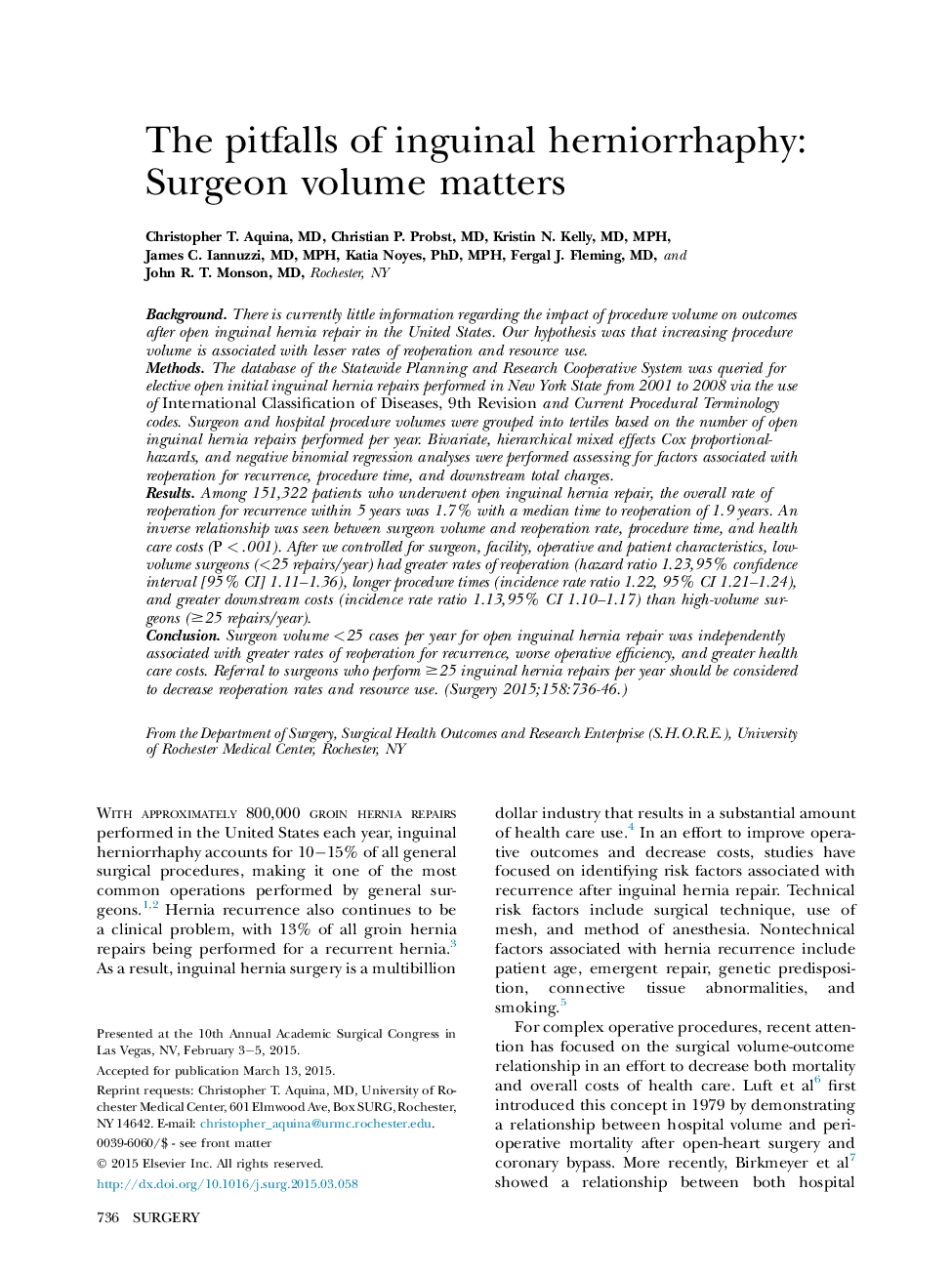| Article ID | Journal | Published Year | Pages | File Type |
|---|---|---|---|---|
| 4306702 | Surgery | 2015 | 11 Pages |
BackgroundThere is currently little information regarding the impact of procedure volume on outcomes after open inguinal hernia repair in the United States. Our hypothesis was that increasing procedure volume is associated with lesser rates of reoperation and resource use.MethodsThe database of the Statewide Planning and Research Cooperative System was queried for elective open initial inguinal hernia repairs performed in New York State from 2001 to 2008 via the use of International Classification of Diseases, 9th Revision and Current Procedural Terminology codes. Surgeon and hospital procedure volumes were grouped into tertiles based on the number of open inguinal hernia repairs performed per year. Bivariate, hierarchical mixed effects Cox proportional-hazards, and negative binomial regression analyses were performed assessing for factors associated with reoperation for recurrence, procedure time, and downstream total charges.ResultsAmong 151,322 patients who underwent open inguinal hernia repair, the overall rate of reoperation for recurrence within 5 years was 1.7% with a median time to reoperation of 1.9 years. An inverse relationship was seen between surgeon volume and reoperation rate, procedure time, and health care costs (P < .001). After we controlled for surgeon, facility, operative and patient characteristics, low-volume surgeons (<25 repairs/year) had greater rates of reoperation (hazard ratio 1.23,95% confidence interval [95% CI] 1.11–1.36), longer procedure times (incidence rate ratio 1.22, 95% CI 1.21–1.24), and greater downstream costs (incidence rate ratio 1.13,95% CI 1.10–1.17) than high-volume surgeons (≥25 repairs/year).ConclusionSurgeon volume <25 cases per year for open inguinal hernia repair was independently associated with greater rates of reoperation for recurrence, worse operative efficiency, and greater health care costs. Referral to surgeons who perform ≥25 inguinal hernia repairs per year should be considered to decrease reoperation rates and resource use.
